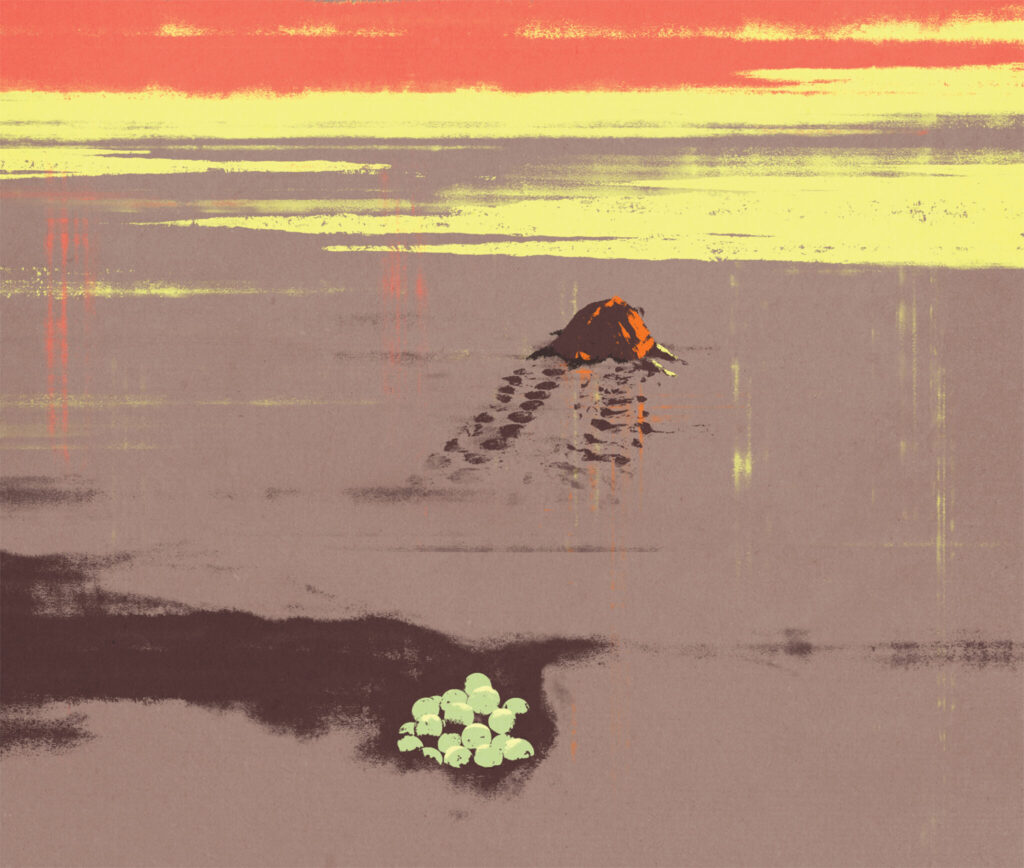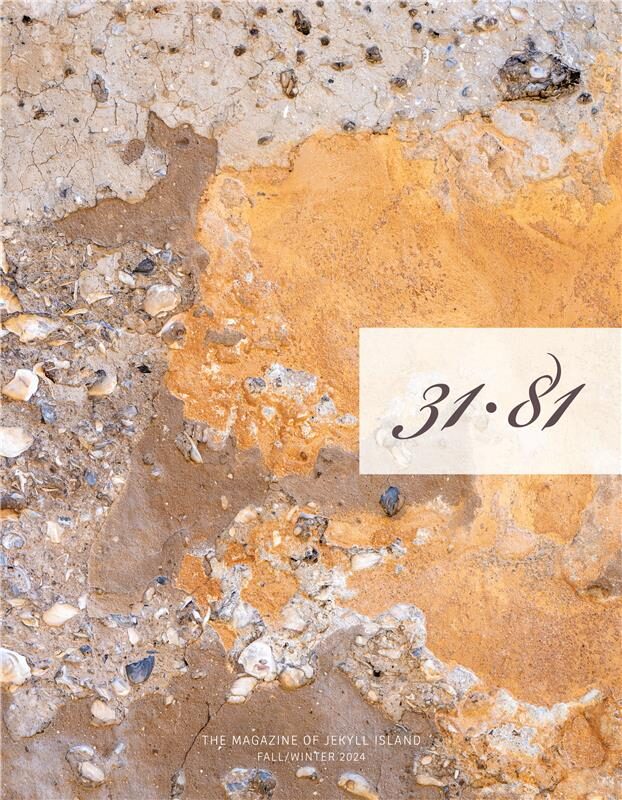Whether for a brief stop or a whole season, migratory species depend on Jekyll.
By TONY REHAGEN
Illustrations by Patrik Svensson
Jekyll Island welcomes all comers. This coastal paradise serves as a season-long layover for some and a quick stop for others. It’s a popular destination for weary travelers looking for a change in environment, a place to find food, relaxation, and a chance to reset to the natural rhythms of life.
And we’re not just talking about snowbirds, retirees, and tourists.
No matter the time of year, humans share Jekyll Island’s bounty and beauty with a vast menagerie of migrating animals, drawn to the island’s unique patchwork of ecosystems. Some come as entire populations. Others arrive alone. They come in search of food or a place to hibernate. They come to escape extreme weather. Some come to breed or lay their eggs, ensuring the future of their species.
Climate, geography, and topography all play parts in Jekyll’s role as a migratory hot spot for all sorts of animals, from manatees to frogs to peregrine falcons to dragonflies. But the island also stands out because of the hospitality that humans show visiting wildlife. Other places mount sincere efforts to keep animals and habitats safe. On Jekyll Island, protecting wildlife and the land is the law.
Only one-third of the island’s acreage, by state law, is allowed to be developed. The rest is pre-served for both permanent residents and those just passing through. A key example of this human-animal harmony on Jekyll: The upcoming upgrades to the island’s golf courses include scrapping nine existing holes. Most of that land will be restored to maritime grasslands and wetlands that will serve
as a wildlife corridor.
“Whether they come from a short distance or a long distance, these species put themselves in a lot of peril and tax themselves energy-wise to get here,” says Joseph Colbert, the Jekyll Island Authority’s wildlife biologist. “There is a primal urge and drive to achieving this migration.”
Shorebirds and Seabirds
Whenever migration is mentioned, birds are the first species to come to mind. An easily recognizable landmark on the north-south Atlantic Flyway, Jekyll is a landing pad for hundreds of species coming from as far away as South America. Some are just passing through on their way home or to warmer climes; others stay all winter to enjoy the warmth, ample food supply, and diverse canopy for cover. The island’s wetlands and deep ponds are the perfect place for wading birds to nest.
It should come as no surprise that the clean and relatively unpopulated Jekyll beaches are a haven for migrating shorebirds—Wilson’s Plovers, Willets, Black-necked Stilts, Skimmers, Least Terns, and American Oystercatchers, to name some—that arrive in spring and scratch out nests in the dunes for their eggs.
The tidal amplitude (the difference in depth between high tide and low tide) is anywhere from six to nine feet on Jekyll, two to three times that of North Carolina or southern Florida. “That leaves a huge amount of exposed sandbar and mudflats during low tide,” says Tim Keyes, a wildlife biologist with the Georgia Department of Natural Resources. “That’s like a grocery store for shorebirds.”
Butterflies
Monarch butterflies are famous for their migration. They are the only butterflies to make a two-way migration because they’re unable to overwinter; they can’t survive winters by slipping into a differ- ent, hibernation-like life stage, as some butterflies do. So they have to move. Their long fall journey south (as far as 3,000 miles), then, can span multiple generations. No individual monarch completes the entire trip.
These regal insects, with their iconic wings of black and orange fringed with bright white dots, make a splashy autumnal appearance on Jekyll. But their numbers are relatively puny compared to that of another orange-and-black winged Lepidoptera, the true royalty of the island’s butterfly migration, the Gulf fritillaries.
Drawn to the island’s flora, particularly the plentiful purple passionflowers, the Gulf fritillaries come to feed and leave their larvae, which will grow into caterpillars on the host plant. And they come in droves. While you might see 300 monarchs blow through in a day, 7,000 to 9,000 Gulf fritillaries may come and go in that timespan. Colbert has witnessed up to 42,000 on a particularly windy day.
With those kinds of numbers, Daniel Quinn, the natural resources manager for the Jekyll Island Authority, says it’s a good thing that the new wildlife corridor near the golf course will be packed with plants for these important pollinators.
Sea Turtles
Sea turtles are so well-known as migrators to Jekyll that they’ve essentially become the island’s mascot. By now, most human residents and visitors know that between May and the end of August, bales of female loggerheads come ashore at night, dig a nest in the sand, and lay their eggs. It’s not always on the exact same spot on the beach where they were born, a phenomenon experts call “site fidelity.” Some nest across multiple states.
Still, getting here is a wonder of nature. While fliers have a clear overhead view and terrestrial wayfarers literally can feel the weather, vegetation, and general lay of the land, scientists had long been mystified by how these shelled swimmers can paddle thousands of miles through a tossing and sometimes treacherous ocean to find a stretch of shoreline suitable for laying their eggs. Studies have revealed the answer: magnetism.
The Earth has a magnetic field that covers the entire planet, including the ocean. Sea turtles detect changes in this field’s strength and direction in relation to the planet’s surface, these studies have shown, allowing them to navigate back to the welcoming Georgia Coast.
Manatees and Whales
Turtles, birds, and butterflies might be the star migratory attractions of Jekyll, bringing in tourists to catch their traveling show of natural beauty and splendor. But the island is a complex network of ecosystems that attracts a large supporting cast of animals on the move.
Each spring, manatees venture north from Florida to munch on the island’s buffet of marsh grass. Their aquatic mammalian cousins, the North Atlantic right whales, come down from New England each winter to give birth to their young calves. They’re all part of the grand cycle of life that plays out on Jekyll Island all year, every year.
“We humans really have no way of understanding the single-minded devotion it takes to accomplish some of these migrations,” says Colbert. “It’s amazing to see all these species move in and out over time.”


